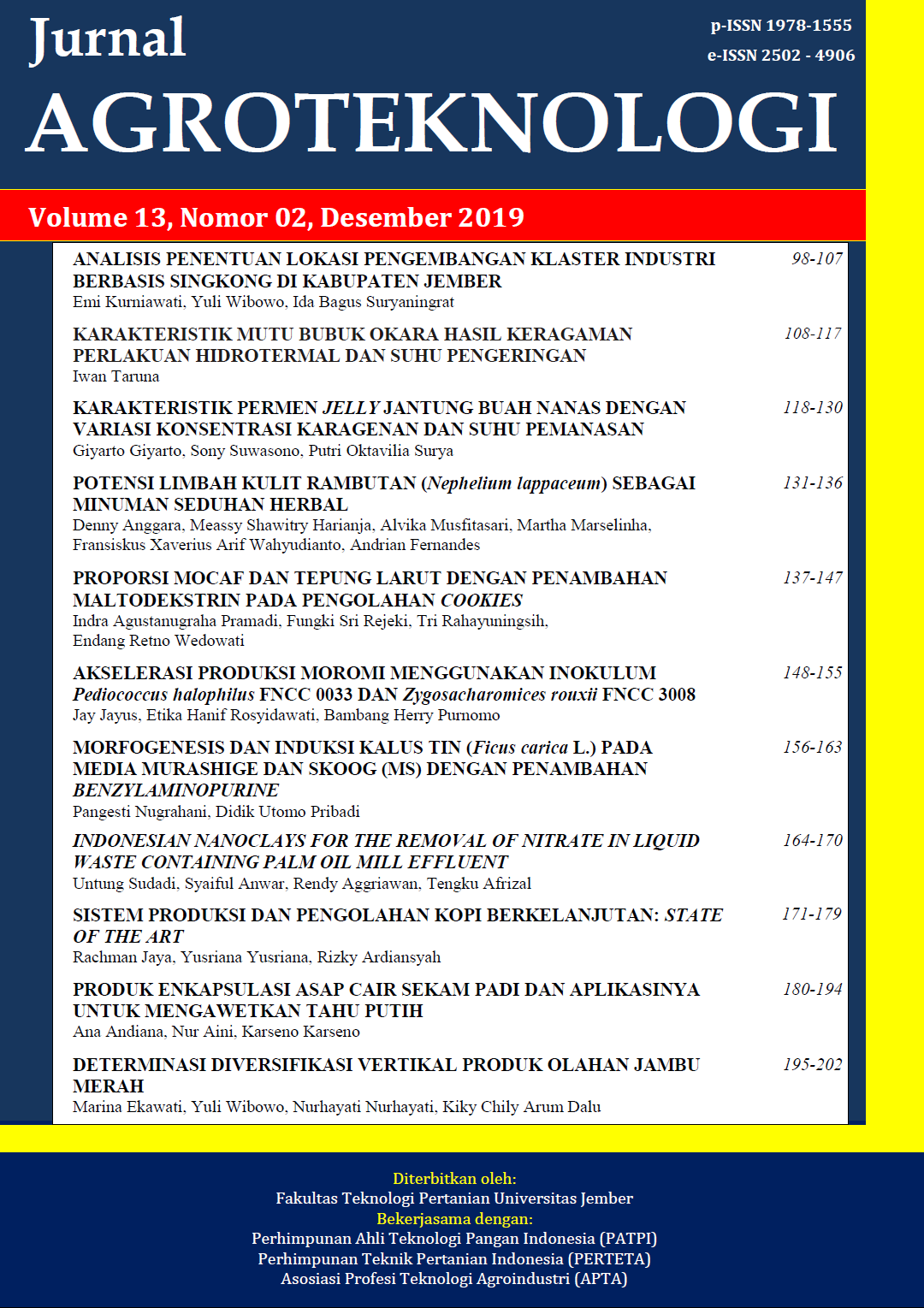POTENSI LIMBAH KULIT RAMBUTAN (Nephelium lappaceum) SEBAGAI MINUMAN SEDUHAN HERBAL
DOI:
https://doi.org/10.19184/j-agt.v13i02.11576Abstract
Rambutan production in Indonesia in 2017 is 523,699 tons. Consuming rambutan fruit will affect rambutan peel as a waste. Although rambutan peel has the potential to be made into herbal brew drinks products. The research aims were to determine the productivity of rambutan peel as a raw material for herbal beverage and estimate the benefits to be obtained. The study used local rambutan fruit raw material. The research was carried out in the Forest Product Laboratory of Dipterocarps Research Center. The research aimed to determine the processing technology of rambutan peel as raw material for herbal beverage and estimated benefits to be gained. The research was conducted in three stages of activity, i.e. calculation of the potential of rambutan peel as raw material for herbal beverage, making of rambutan herbal beverage and estimated its profit. Rambutan peel can be processed into herbal brew drinks using simple technology, by making the rambutan peel into a dry powder and put it into a brewed beverage bag. The brewed beverage packaged in 1 box about 3 bags and each bag containing @ 1.5 g herbal beverage. The estimated profit of 1 box of herbal beverage was about 30.4% of the selling price.
Keywords: herbal brew drinks, home industry, marine tea, rambutan peel
Downloads
Downloads
Published
Issue
Section
License
Jurnal Agroteknologi has CC-BY-SA or an equivalent license as the optimal license for the publication, distribution, use, and reuse of scholarly work. Authors who publish with this journal retain copyright and grant the journal the right of first publication with the work simultaneously licensed under a Creative Commons Attribution-ShareAlike 4.0 International License that allows others to share the work with an acknowledgment of the work's authorship and initial publication in this journal.









.png)
